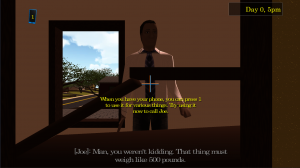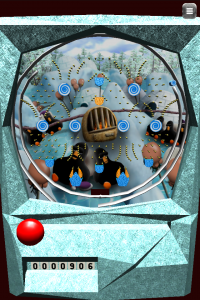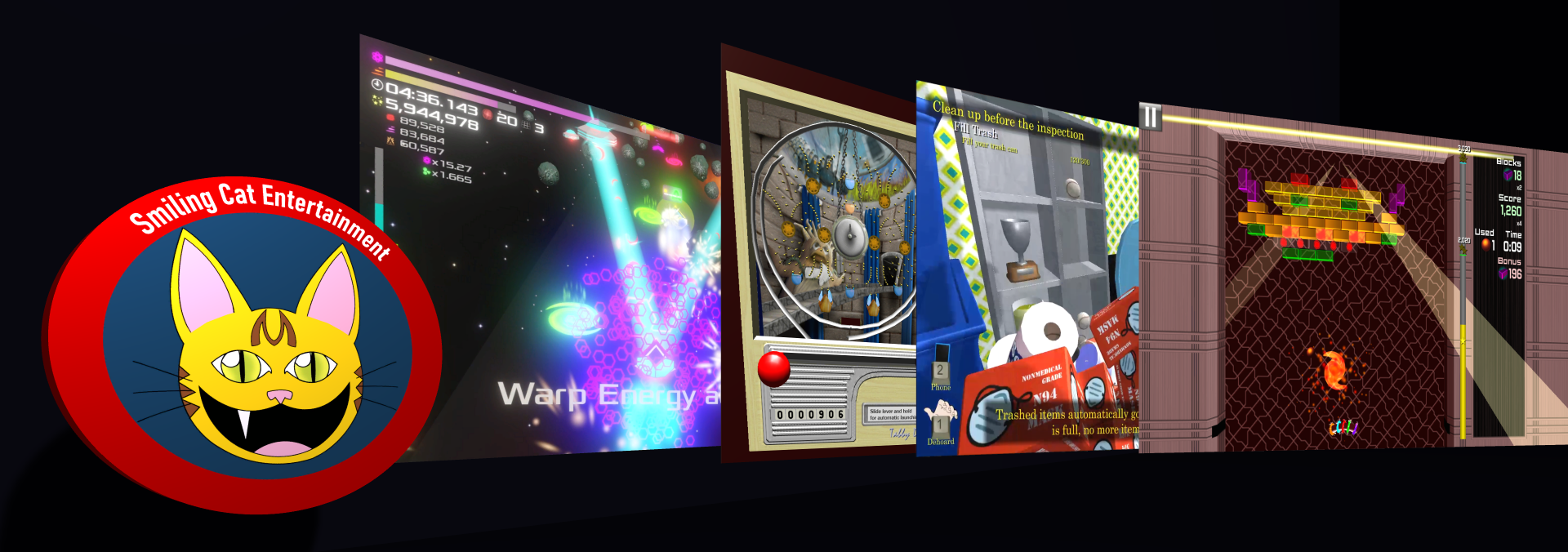 When not getting ready for the Ohio Game Developer Expo itself or working to deliver the next update to Vintage Pachinko, I’ve been working on getting the story eventing and scripting in a good place for Dehoarder 2. I now have enough functionality to take the player through the first 5 minutes of the game, with a scenario involving waking up, getting out of bed, finding your way blocked by the fallout of an earthquake, undertaking mission to search for a missing cellphone, then using said cellphone to call for help.
When not getting ready for the Ohio Game Developer Expo itself or working to deliver the next update to Vintage Pachinko, I’ve been working on getting the story eventing and scripting in a good place for Dehoarder 2. I now have enough functionality to take the player through the first 5 minutes of the game, with a scenario involving waking up, getting out of bed, finding your way blocked by the fallout of an earthquake, undertaking mission to search for a missing cellphone, then using said cellphone to call for help.
My goal for the expo is to provide enough gameplay for players to go through two missions (not necessarily linear – I might have the demo teleport to a later mission), so I am almost there. Once the second mission is in place, I will spend remaining time before the expo making the game look as good as possible.
Dehoarder 2 will be the first Smiling Cat game to feature actual humanoid 3D models. Artistically, I find myself unable work with the human form worth a crap, which is why such models have been missing for so long. The Dehoarder 2 story requires a friend for the main character, though, so there was no more getting around it. Luckily, I don’t need to do much yet in terms of animation, and the models I acquired are very pleasantly functional. I was very surprised when I dropped one in the game, ran the game, and found the model automatically cycling through some idle animations.
 I mentioned a Vintage Pachinko update. Yes, after a small hiatus, Vintage Pachinko will soon receive an update with two brand new cells from Phil Peer of Dioram, both from the Deus Penguin series. The second new cell will also feature a brand new frame design, codenamed “Snowcat”, angular and icebergish in appearance. Final builds are being generated now, and I’m going to try again for a simultaneous Appstore and Google Play release.
I mentioned a Vintage Pachinko update. Yes, after a small hiatus, Vintage Pachinko will soon receive an update with two brand new cells from Phil Peer of Dioram, both from the Deus Penguin series. The second new cell will also feature a brand new frame design, codenamed “Snowcat”, angular and icebergish in appearance. Final builds are being generated now, and I’m going to try again for a simultaneous Appstore and Google Play release.
Speaking of Google Play, Google is not my favorite company right now, after adopting a couple of rather indie-unfriendly policies. First is the 3-day response time for support requests. While I have never taken more than 24 hours to respond to the two support requests I’ve received in 17 months, I’ve also never had one come in while I was, say, on a cruise or elsewhere that a connection to the digital world is tenuous. What this is going to force me to do as a one-man shop is to put up an impersonal support auto-responder just to cover myself in case a request comes in while I am digitally indisposed for a duration. I know that Google is trying to combat developers that NEVER respond to support requests, but the vast majority indie developers impacted by this policy take great pride in their work and already make all possible efforts to respond to support requests in a timely fashion. To chain everyone to a 3-day SLA under threat of ban because of a few bad developers is ham-fisted and overreaching because it affects too many good, decent developers outside of Google’s area of concern.
The second objectionable policy is the public publishing of developer physical addresses on the Google Play store. It is supposedly to comply with consumer protection laws, but I don’t seem to be able to find any such laws that require that a physical address be provided to a non-customer (with Google Play developers already provide an address to paying customers). Given recent events in indie gaming, it is a significant risk for any developer based out of their home to expose this information to the general public, and Google seems completely tone-deaf to that concern. While I’ve already taken steps to protect myself and my family, many other indie developers may not have the resources to do so, and they should not have to undertake such unnecessary risks or expenses just to get their work out in front of the public.
Well, enough of getting that off of my chest. There’s a lot of work to do today, so I’m going to go focus on that instead.
